Turquoise is versatile and vibrant and can add a unique charm to any artwork. While many shades of turquoise can be purchased already mixed in a tube, understanding how to mix your own turquoise in its various shades is helpful for artists.
Basically, turquoise is a mixture of blue and green. However, knowing the right ratios, color bias and addition of other colors of acrylic paint to get your desired shade of turquoise is a bit more complicated.
Turquoise falls between blue and green on the color wheel. It is typically placed closer to the blue side, as it is often considered a variant of blue with green added.
Turquoise is often referred to as a cool color, but it can also be a warm color, depending on how it is mixed. Read more about color temperature in this post.
In color theory, different shades of turquoise can be used to create analogous color schemes with blues and greens or contrasted with colors from the opposite side of the wheel, like warm reds or oranges, for complementary colors.
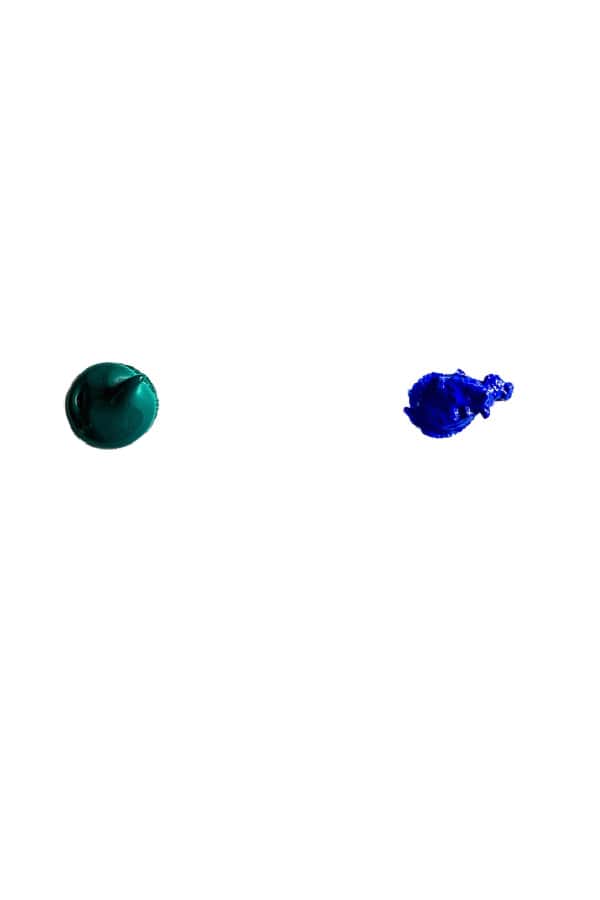
Creating Basic Turquoise
The foundation of turquoise paint lies in the colors blue and green. Start with a base of blue paint and slowly add green in small amounts until you achieve the desired turquoise hue.
Try to use blue pigments with no red bias, so phthalo blue, cerulean blue, or cobalt blue would be good choices. Turquoise blue can also be mixed using ultramarine blue, even though it leans more toward purple.
I often use phthalo green for my turquoise mixes, but other greens, such as sap green or Veridian, will also work.
To understand more about color mixing and color bias, read my post on color theory for beginners.
Below is a chart of color mixes using Phthalo green as the base color. I have added cobalt, cerulean, ultramarine blue, and phthalo blue so you can see the different shades these color mixes make.
You can also use sap green or veridian along with your blue to make turquoise.
Mix a little green paint into the blue colors using a palette knife. Keep adding more green paint until you reach your desired color.
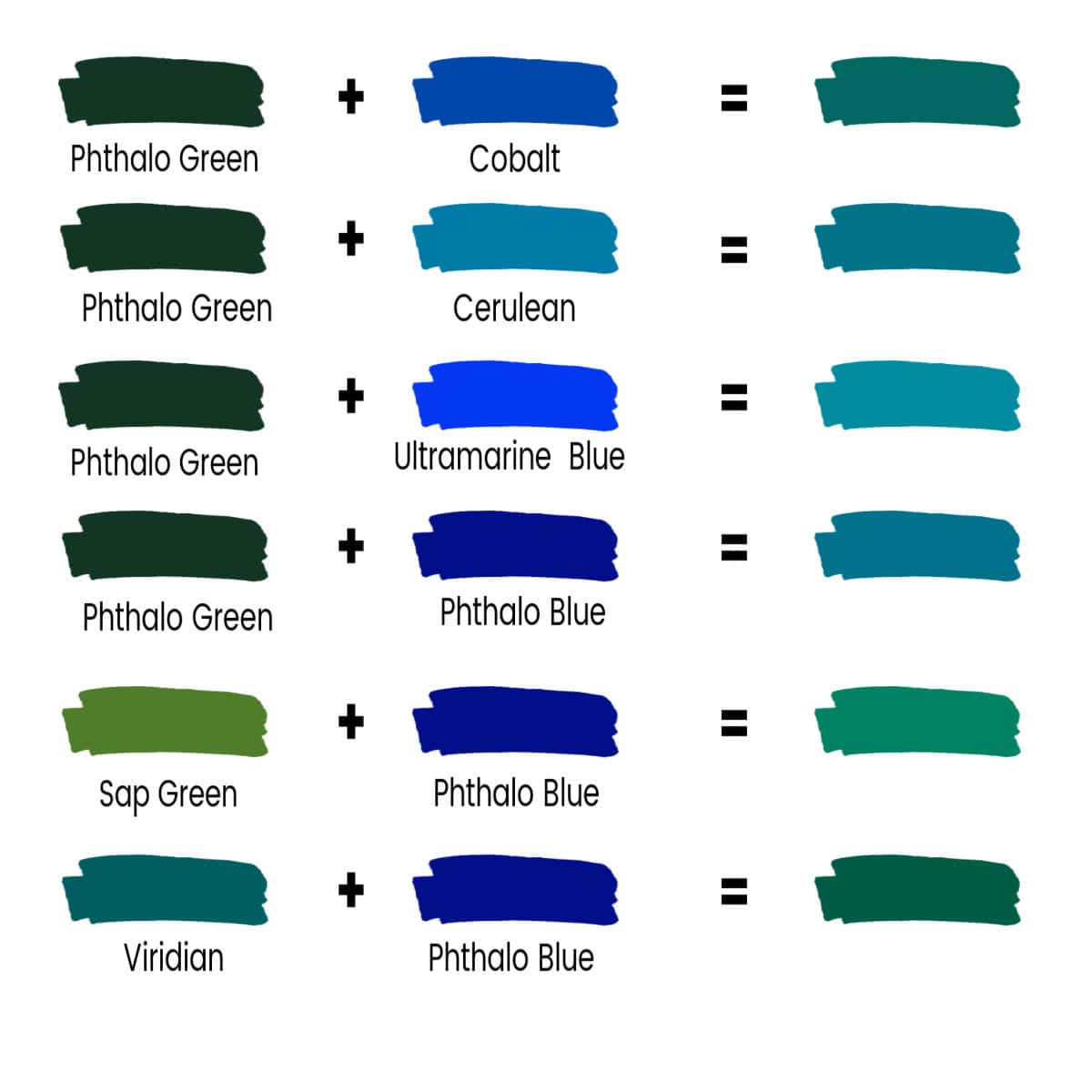

Light Shades of Turquoise
Mix your basic turquoise with titanium white or zinc white for a lighter shade.
Begin with a little bit of white paint, gradually adding more until you reach the desired lightness. The key is to maintain the turquoise color while achieving a softer tone.
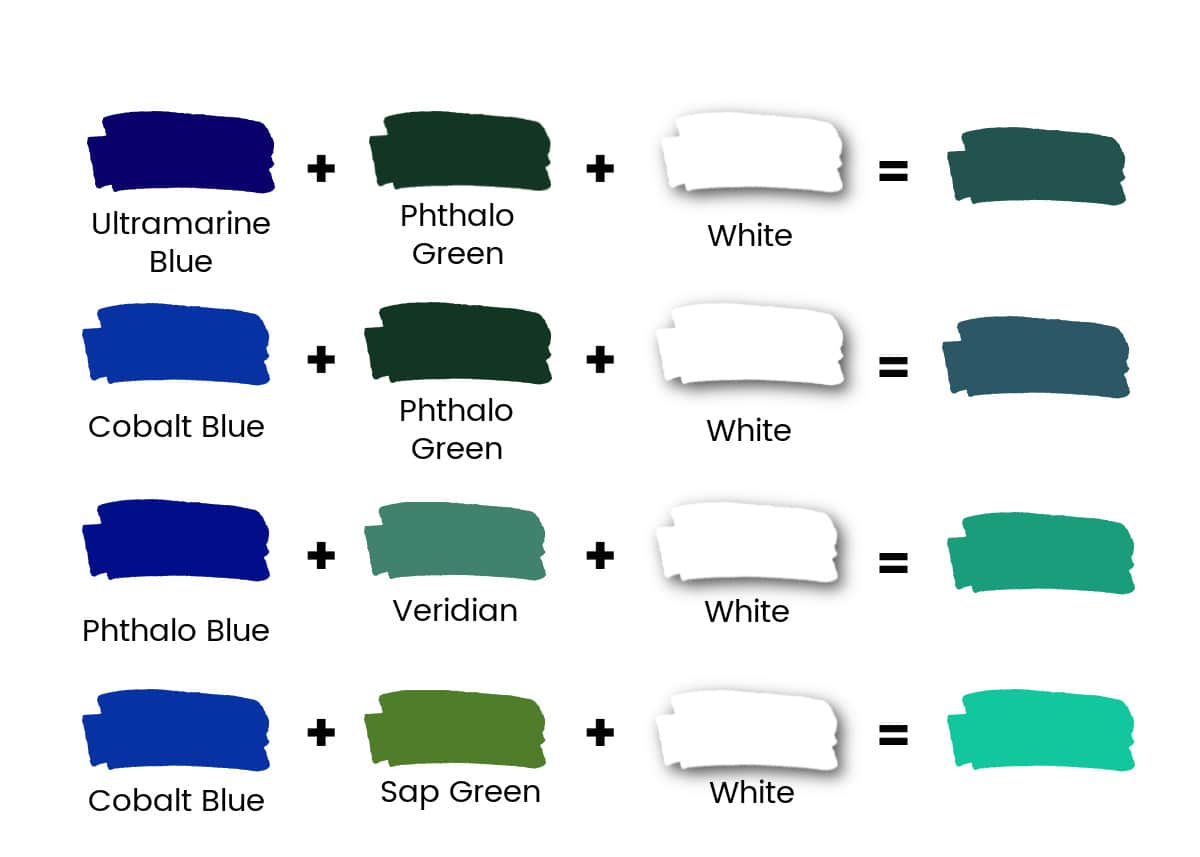
Darker Shades of Turquoise
Add a little more dark blue, such as phthalo blue or Prussian blue, to deepen your turquoise and get a darker color.
Add a tiny bit at a time until you have the desired shade. Adding too much at once can result in a blue color instead of turquoise.
Variations of Turquoise
1. Greener Turquoise: Increase the green proportion in your mix for a more verdant turquoise. This variant works well for depicting natural elements like foliage or sea.
2. Bluer Turquoise: Add more blue for a cooler, ocean-like turquoise, ideal for skies and waters.
3. Earthy Turquoise: Introduce a tiny amount of yellow or burnt umber for an earthier, muted turquoise, perfect for landscapes or vintage-themed paintings.
4. Muted Turquoise: Add a tiny touch of orange or alizarin crimson to get a muted or toned-down turquoise. Be sure to only use a touch of orange or red. Too much will give you a muddy color.
I usually work in acrylics, but these color mixes will also work for oil paints.
You don’t have to stick with the greens and blues I have listed.
Experiment with your own colors, mixing your greens and blues and swatching them on a sheet of card stock or watercolor paper so that you can see what color mixes you like best.
It is a good idea to make a note of the colors you used for each swatch.

Application in Paintings
Turquoise can transform a painting, offering a splash of vibrancy or a touch of serenity. Its application ranges from being the star of the piece in seascapes and sky to a subtle accent in portraits or abstract works.
Its versatility allows it to be a background or focal point, depending on the artist’s intent.
You expand your creative possibilities by learning how to mix turquoise in various shades. Experiment with these mixes and see how to mix your own unique turquoise color.
How to Mix Turquoise Web Story
If you have questions, you can leave them in the comments below. You can also join our free Facebook group, Trembeling Art Creative Corner, where you can ask questions, post your work and get to know some fantastic artists from all genres and skill levels. 😊
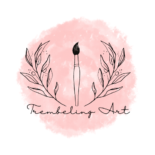
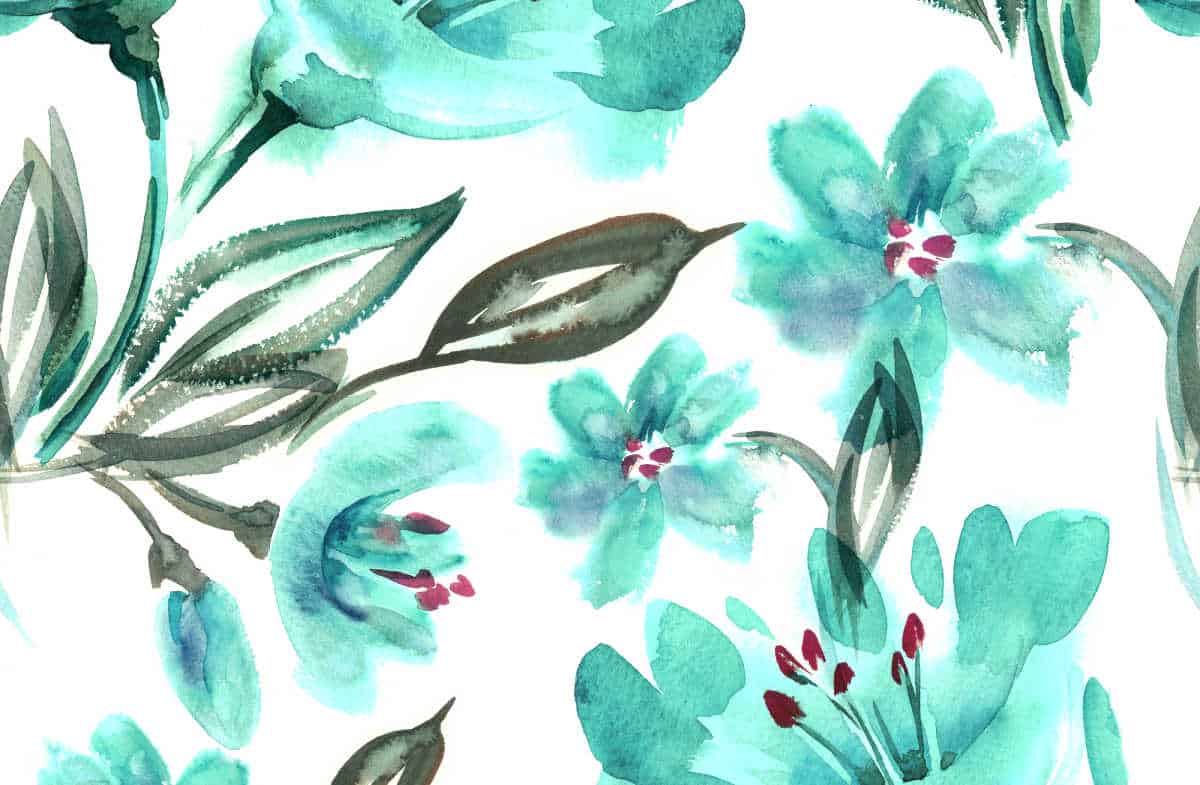
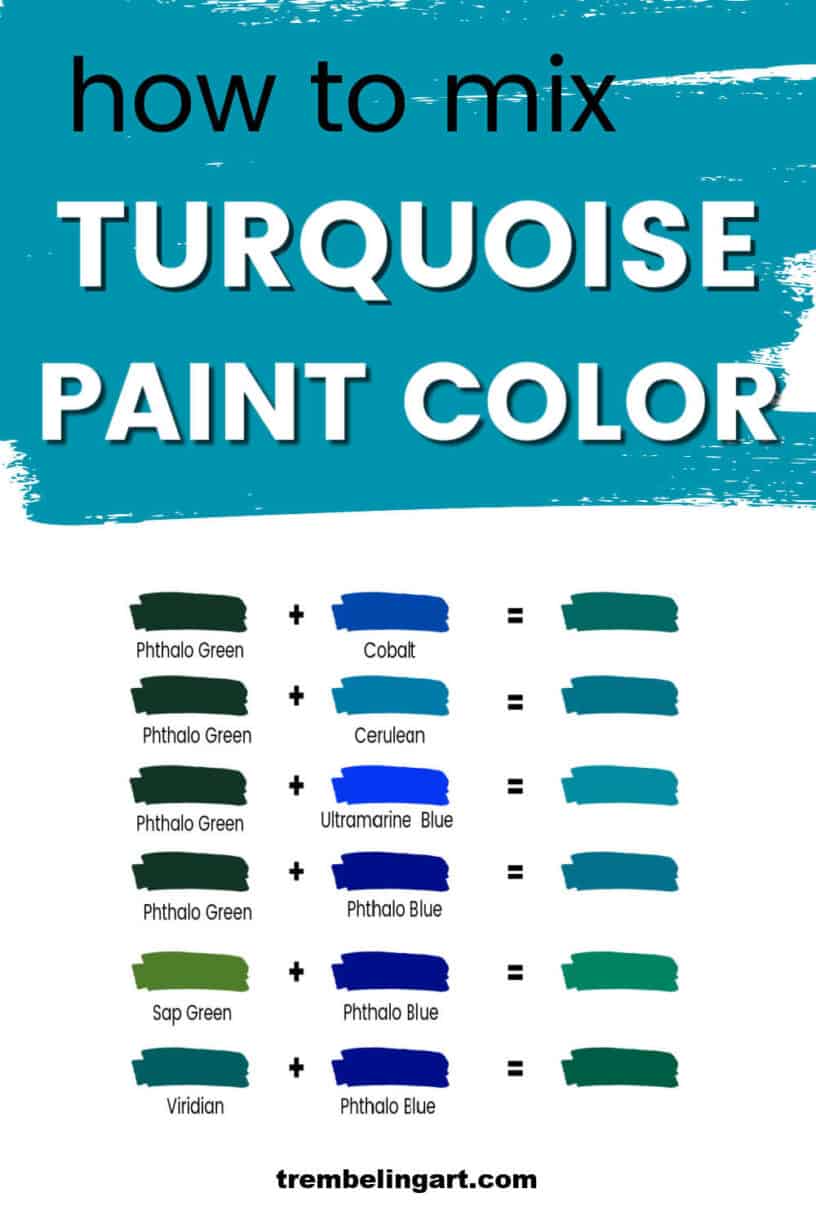
Thanks for sharing! It’s awesome!
I’m trying to stay away from social media, I have deleted all of my accounts. I do search utube for tutorials on acrylic painting, which is how I found you, but I’m not a utube subscriber. Just thought I’d mention it, so you could keep “us” in mind, if you post something we can download. Thanks for the wonderful information you share.
thanks for valuable color mixing information